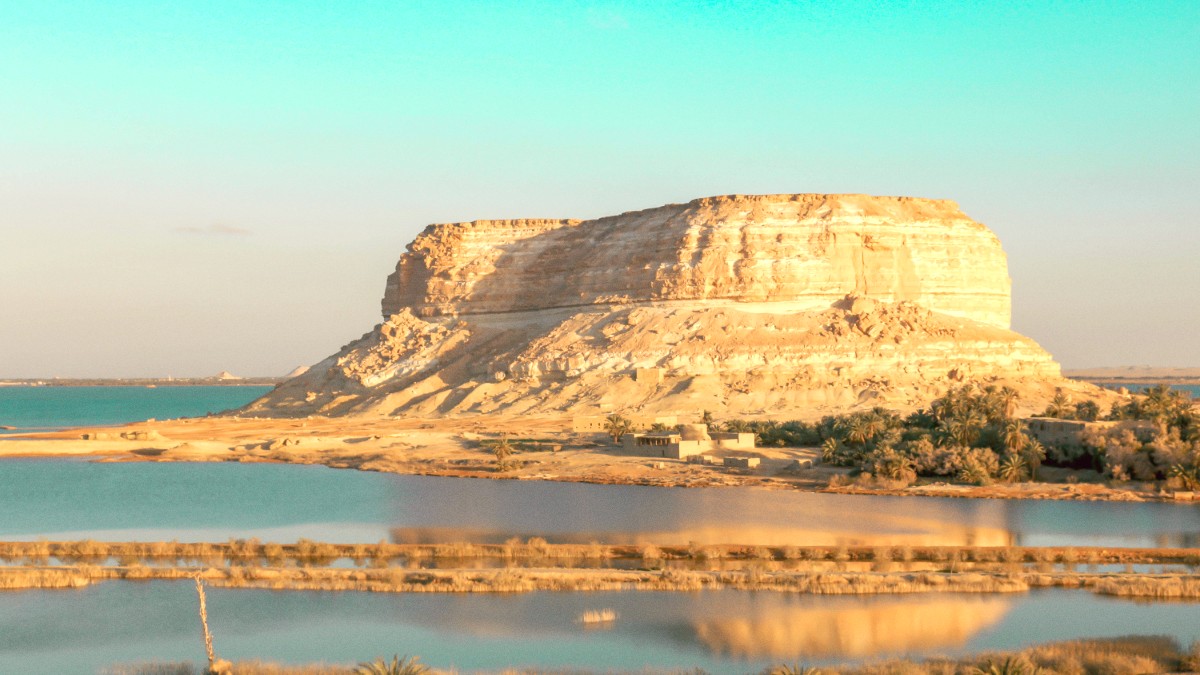
Western Desert, Egypt
Day trips from Siwa usually involve exploration of the oasis's immediate vicinity and the Great Sand Sea, rather than distant cities. For this activity, an organized tour is not just recommended; it is required for safety and navigation. Independent travel into the deep desert is unsafe and generally forbidden for tourists without permits and experienced guides.
Gabal Maraki: This site is a fossilized coral reef located in the middle of the desert, illustrating that the Sahara was once an ancient sea. It is often part of desert safaris to the Great Sand Sea. Setra Oasis: This small, uninhabited oasis located about 80 kilometers southwest of Siwa is much more remote and requires a well-equipped 4x4 vehicle and a very experienced guide. It generally is part of multi-day desert expeditions or specialized tours.
Siwa's surroundings offer various natural wonders for exploration, often combined with cultural visits.
Dedicated tours or self-guided bicycle rides lead to different salt lakes around the oasis, like Birket Siwa and Birket Zeitoun. Enjoy the buoyant waters and photographic opportunities.
Spend a day cycling or walking through the extensive palm and olive groves that make up the heart of the oasis. Discover hidden springs, traditional farms, and observe the agricultural life that sustains Siwa. This gives a peaceful escape into nature.
Experience traditional Siwan life and ancient history beyond the main town.
A traditional mud-brick village known for its distinctive architecture and excellent sunset views. Accessible by tuk-tuk or bicycle.
Located in Aghurmi, this site offers direct historical and archaeological insights into Siwa's ancient past.
This site contains ancient Roman tombs with well-preserved paintings, revealing the oasis's diverse heritage.
This natural spring is believed to be visited by brides for good luck, offering a glimpse into local customs and beliefs. It is a peaceful spot for relaxation.
Beyond specific sites, immerse yourself in daily Siwan life by observing local customs, agriculture, and community interactions. This provides insight into the oasis's unique culture.
After experiencing Siwa, consider extending your trip to explore other parts of Egypt.
After Siwa, many travelers head to Marsa Matruh, a coastal city on the Mediterranean Sea. It features beautiful beaches and a relaxed atmosphere, especially during summer. Marsa Matruh serves as a point for catching long-distance buses back to Cairo or Alexandria.
Egypt's capital city also functions as the main hub for international flights. It provides a bustling urban experience with historical sites like the Pyramids of Giza and the Egyptian Museum.
For a longer, distinct desert adventure, combine Siwa with a trip to the White Desert and Black Desert National Parks. These areas feature unique geological formations, including chalk-white rock formations and volcanic black mountains.
Egypt's second-largest city, Alexandria, provides a different historical and cultural experience with its Roman history, the famous Library of Alexandria, and a distinct Mediterranean vibe.
When planning extensions, consider transportation times and booking in advance. Ensure you allow ample time for travel between destinations.
Always factor in generous travel times between remote areas and cities.
Secure your lodging for subsequent destinations to avoid last-minute issues.
Have Egyptian Pounds for transactions, especially outside major tourist centers.